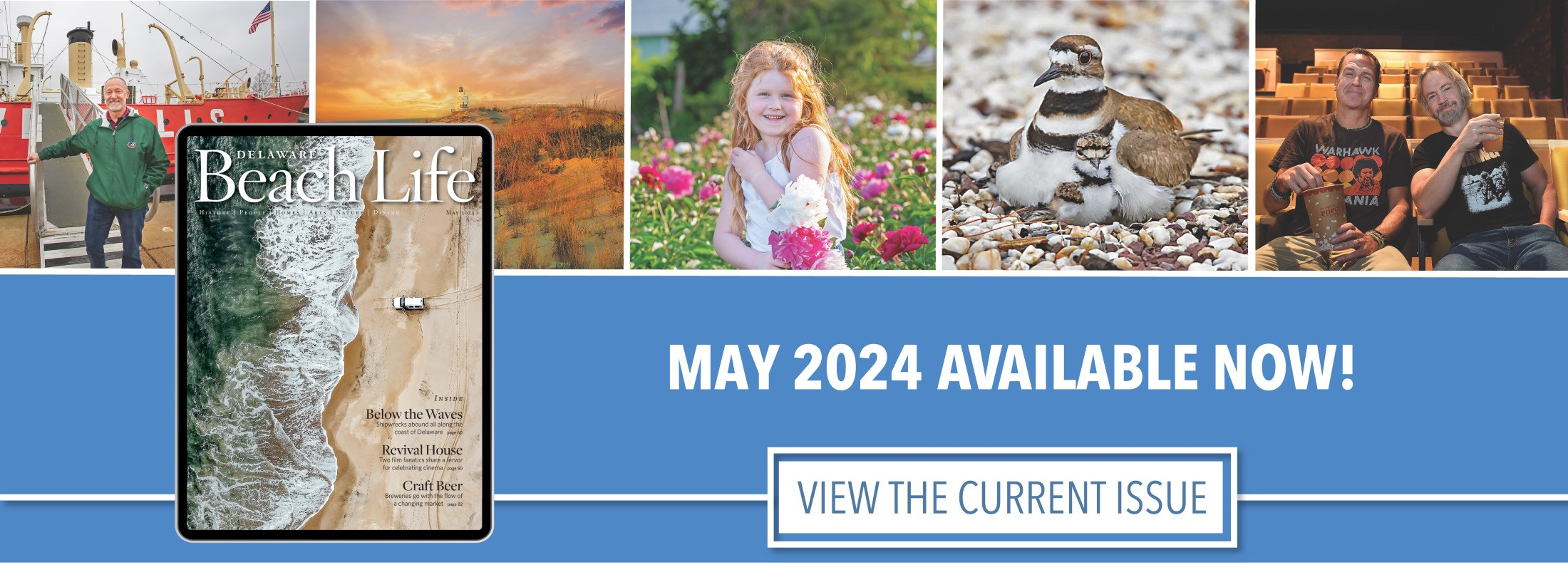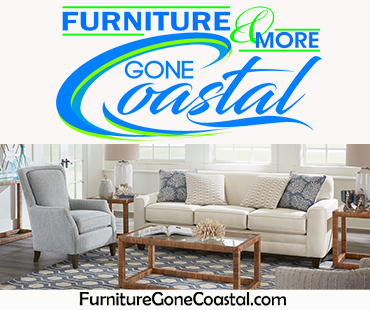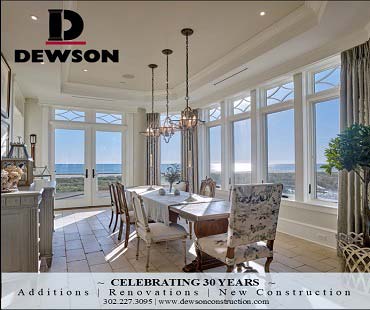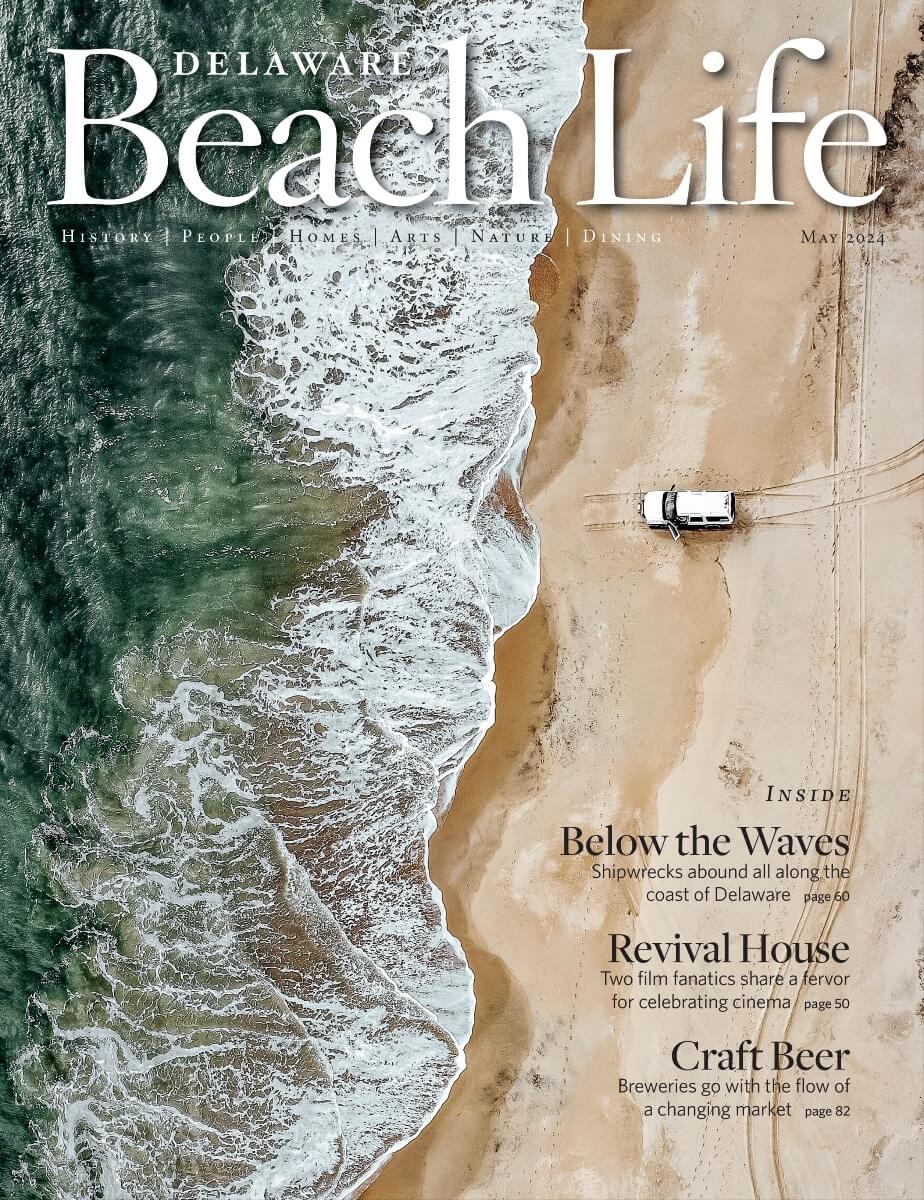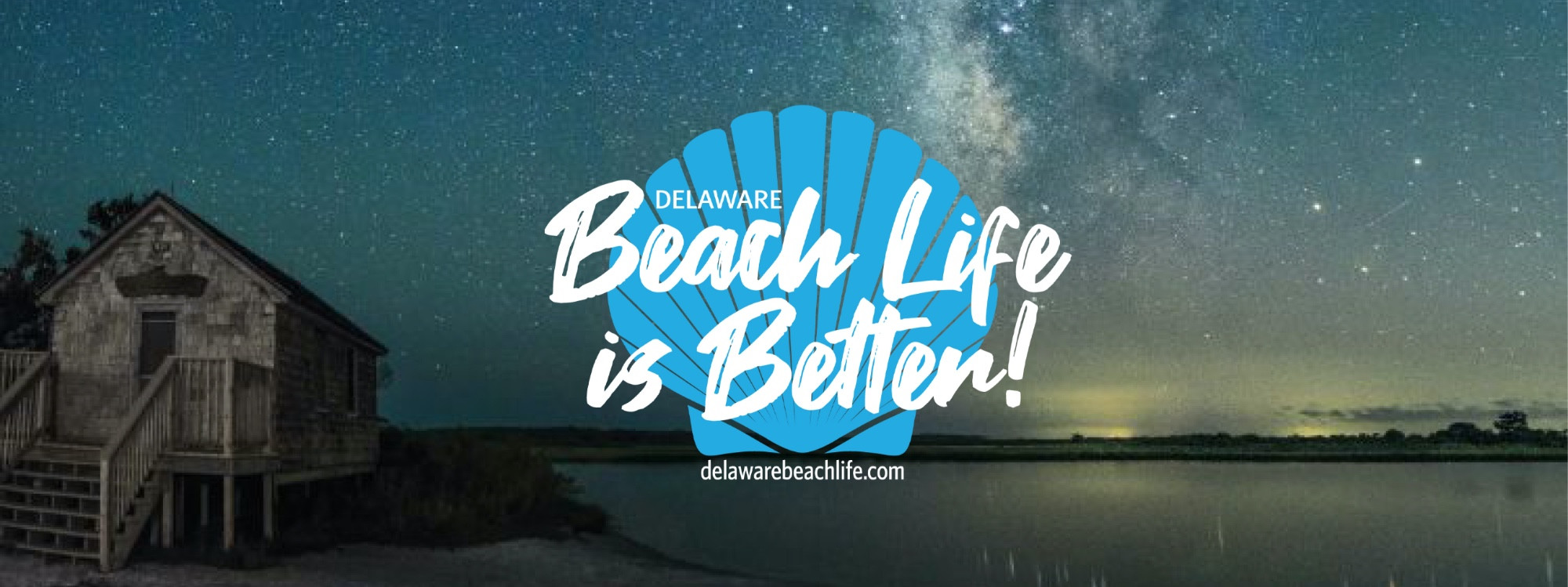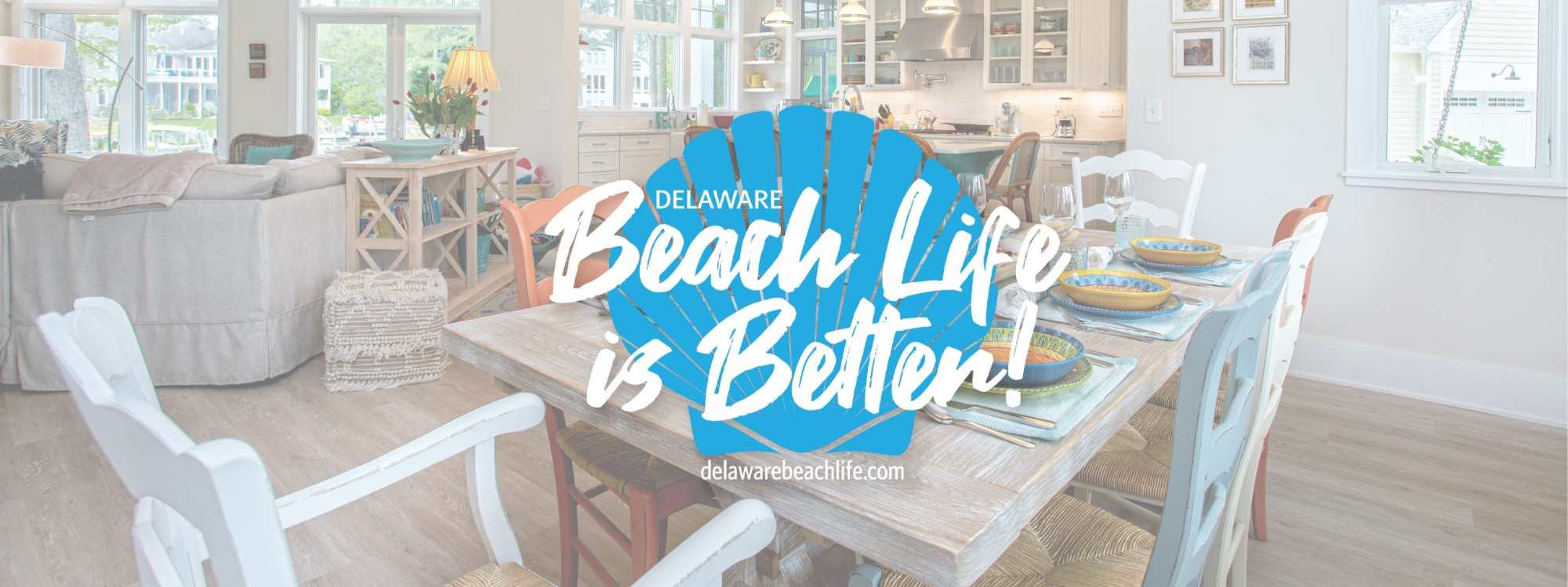
Generations of local families have charted a course to keep a racing tradition alive.
By Jeanne Shook
From the August 2019 issue
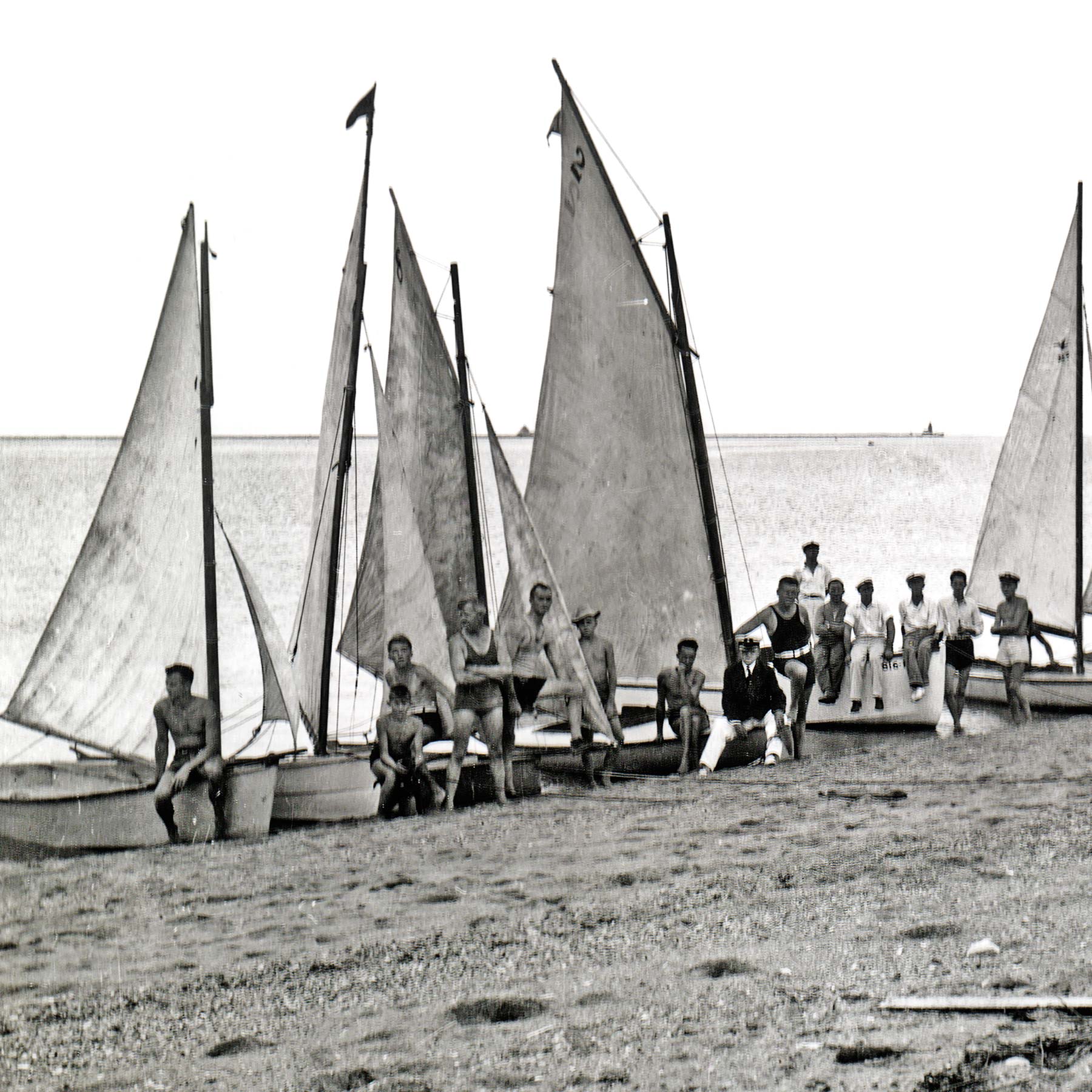
In August 1932, as Lewes Beach resident George E. Davisson observed small boats sailing on Delaware Bay, an idea was born. The owner of a small sailboat himself, Maj. Davisson — as he was known — was eager for competition. Why not, he wondered, establish a sailing association to promote racing?
After consulting with fellow Lewes resident Marjorie F. Virden, the two arranged a gathering of other boating enthusiasts from the community and proposed the formation of a sailing club. The idea was well received, and within two weeks the Lewes Yacht Club was established and held its first race.
The competition was rooted in a time-honored practice.
“Racing on the Delaware dates back to when local captains competed, under sail, to be the first to reach an incoming ship, thus securing the job of taking the ship up the narrow, tortuous Delaware River, with its unpredictable shoals,” Lewes Yacht Club member Marjorie Miller wrote in the club’s 80th anniversary chronicle.
Since that time, generations of Cape Henlopen sailors have upheld the region’s unique sailing culture. Whether “in the blood” or acquired through efforts to allow greater access to the sport, a shared passion has animated and sustained participants in area sailing clubs, who mirror the competitive spirit of their predecessors.
Two such trailblazers were T. Rowland Marshall and D. Rodney Evans, renowned competitors and lifelong friends who raced the wind in their 17-foot Mobjacks every Sunday at the yacht club from 1934 until 2008. “To them, sailing was more than a pleasant way to spend Sunday afternoons. Racing connected them to Lewes’s heritage, rooted in its historic relationship with the water, challenging the elements,” says Miller in her historical account.
For Marshall, Evans and other boaters of that era, local racing was BYOB — bring your own boat. But for would-be sailors without boats, the two friends built an entire fleet of Sailfish in the 1950s. Constructed from DIY kits in Marshall’s garage, this rudimentary one-person wooden vessel consisted of a flat hull and a sail. Redesigned as a fiberglass boat with a “cockpit” for greater comfort and stability in 1952, the craft was rebranded the Sunfish.
Marshall’s daughter Connie (now Connie Miller) and neighbor Nick Carter learned to test the waters on a Sailfish when they were 8 and 10, respectively. Like many of their counterparts, they launched their racing careers at an early age and haven’t stopped since.
“We all sailed,” says Miller (no relation to Marjorie Miller). “Back then, every kid had their own boat. … We’d tie a little lunch bag to the spar and go sailing every day. That’s how I grew up.”
Carter recalls “some fierce competition” from the area’s other neophytes. With his father and grandfather — Frank S. Carter Jr. and Frank S. Carter Sr. — among the 17 charter members who founded the Lewes club, this third-generation sailor learned quickly “to understand the currents and tides on Lewes Beach to become more competitive.” He recalls that after church on Sundays, “I couldn’t wait to get on my boat and sail down to the yacht club” from the family home on Bay Avenue to compete in the weekly races.
In the decades since his first Sailfish outing, Carter has sustained a level of intensity for the sport that has defined his life and career. After his discharge from the United States Navy while serving in San Diego, he remained on the West Coast as a real estate broker until 1998, when he made his way back home to Lewes. (Upon his return, Carter joined Jack Lingo Realtor, where he is currently an associate broker, heading up the Nick Carter Team.) Since then, Carter has helped energize the Cape sailing community. In 2005, he organized the LYC’s “Beer Can Fleet” (an informal regatta for boats of all sizes and classes), inviting others from local boatyards to participate in races held every Wednesday and Sunday throughout the summer. In 2008, he co-founded the Cape to Cape Challenge, the annual race between the Lewes Yacht Club and the Corinthian Yacht Club of Cape May, N.J. Carter has won that event four times in the cruising division with his 36-footer, Delgato. On Aug. 2-3, he’ll compete for the 11th time.
Nick’s son, Frank S. Carter IV, was introduced to sailing at the age of 6. In 2011, then-9-year-old Frank sailed with his dad on the Cape to Cape Challenge; they finished third.
Miller has also maintained a lifelong passion for the sport. Besides racing solo in both Sailfish and Sunfish regattas since the age of 8, as a teenager she teamed up with her father to race the two-person Mobjack. For 46 years, Marshall and his daughter raced the boat in competitions near and far, finishing second in the 2006 nationals. Marshall, now 97, was 85 when he “retired” from sailing. But Miller shows no signs of slowing down.
Under her leadership, the Lewes Yacht Club will host the 2019 United States Sunfish Class Association Masters championship, along with the Mobjack nationals Aug. 17-18. “Masters” signifies that competitors are over 40, although ages range all the way up to 80. According to Miller, the Sunfish Masters is expected to attract 30 to 40 boats from the Mid-Atlantic states as well as Ohio and South Carolina, with eight to 10 Mobjacks expected to compete in the nationals.
A nationally ranked sailor, Miller is a member of Delaware’s Maritime Hall of Fame — as is her father — and has the distinction of serving as LYC’s only woman commodore. (“For now,” she says with a laugh.)
An artist and retired teacher, this sailing veteran says she’s gained confidence from racing and her ability to handle a boat solo — especially when competing against a temperamental Mother Nature. That was the case two years ago at the Sunfish world competition in Cartagena, Columbia. Seventy years of age at the time, Miller sailed all 15 races, despite a hurricane off the coast of Puerto Rico that produced 15-foot waves for two days. “You couldn’t see the boat next to you,” she recalls, citing the adventure as one of her proudest accomplishments.
Miller’s competitive spirit will be put to the test in the upcoming Masters championship, where one of her likely competitors will be Nancy Hastings Jaywork. A longtime member of the Rehoboth Bay Sailing Association, Jaywork attributes her lifelong dedication to the sport to being born into a family that gave her access to an activity she loves.
The RBSA, though founded 30 years after the Lewes Yacht Club, had a similar genesis in that a small group of families and friends came together for the purpose of both recreational sailing and racing.
Jaywork’s parents, Turner and Sarah Hastings, were among the founders of the club, which was launched in 1963. Her grandfather, Leslie Gooden, owned a beach house directly across the street from the newly formed RBSA. His Dewey Beach residence became Jaywork’s summer home and her springboard to the sailing lifestyle.
“By the time I was 6 years old, I spent every summer of my life at the beach,” she recollects. Her family lived in Dover, but her mother and four siblings would drive to Dewey Beach “the day school got out, and not return till the day before the first day of school.”
Sailing school, weekly races at the club, and a job as a sailing instructor allowed the young devotee to “race various types of sailboats every chance I got.” Often, she crewed for her parents, who raced a 19-foot Lightning in national competitions. The retired elementary school teacher, mother of three and grand-mother of two attributes her longevity on the water to the fact that “starting so young and doing it so long gave me the opportunity to advance to a skill level that is hard to duplicate in other sports.”
Now in her 60s, Jaywork is a tough competitor: “On any given day, I can race against world champions and beat them. I’ve raced against people in their 70s and 80s who are world and national champions. If the conditions are just right, they can beat me. You can do it at all ages” — proof positive that sailing is a sport made for lifelong participation.
Jaywork competes in six to eight Sunfish regattas each year. When her son asks, “How can that really be fun — just sitting in a boat, going 2 miles an hour?” she tells him that “before the start of a race, my heart starts going, my blood’s pumping because it’s a timed start. … It’s like the start of a race at Dover Downs.”
Indeed, “the start is what makes or breaks you” in a race, she says.
Dave Racine, her fellow sailor and frequent competitor, observes that “there are two types of sailors: people who get deeply into the competition, and those that want the quiet solitude of sailing.” As for himself: “I’m into the competition.”
A sailing “late bloomer,” Racine is no less enthusiastic about it than his counterparts who got their sea legs at a much earlier age. A motor boater since the age of 14, Racine says the tide turned the moment he set sail in his brother-in-law’s boat five decades ago. Within two months he bought a Lightning and “got into it big-time.”
For Racine, sailing became a true family affair. He and his late wife, Kitty, competed all over the East Coast with their daughter and son as crew (until the children went off to college). The family raced several classes of boats, including the Sunfish, Lightning and Flying Scot.
The sport is “great for families,” says the retired electromechanical engineer (and jack of all trades), admitting that every winter when the kids were growing up, the couple took them out of school for two weeks and headed to Florida for races in world-class competitions. “It was the best education beyond anything they could’ve gotten in school. … I’d be thrown in jail if I did that today,” he says with a laugh.
One of the RBSA’s original members, the octogenarian sailed until last year when health issues suspended that activity. However, he remains actively involved with the club, is often seen assisting other sailors, and continues to exhibit his passion for the sport.
It’s little wonder why. Sailing, he says, “gets into your blood.”
